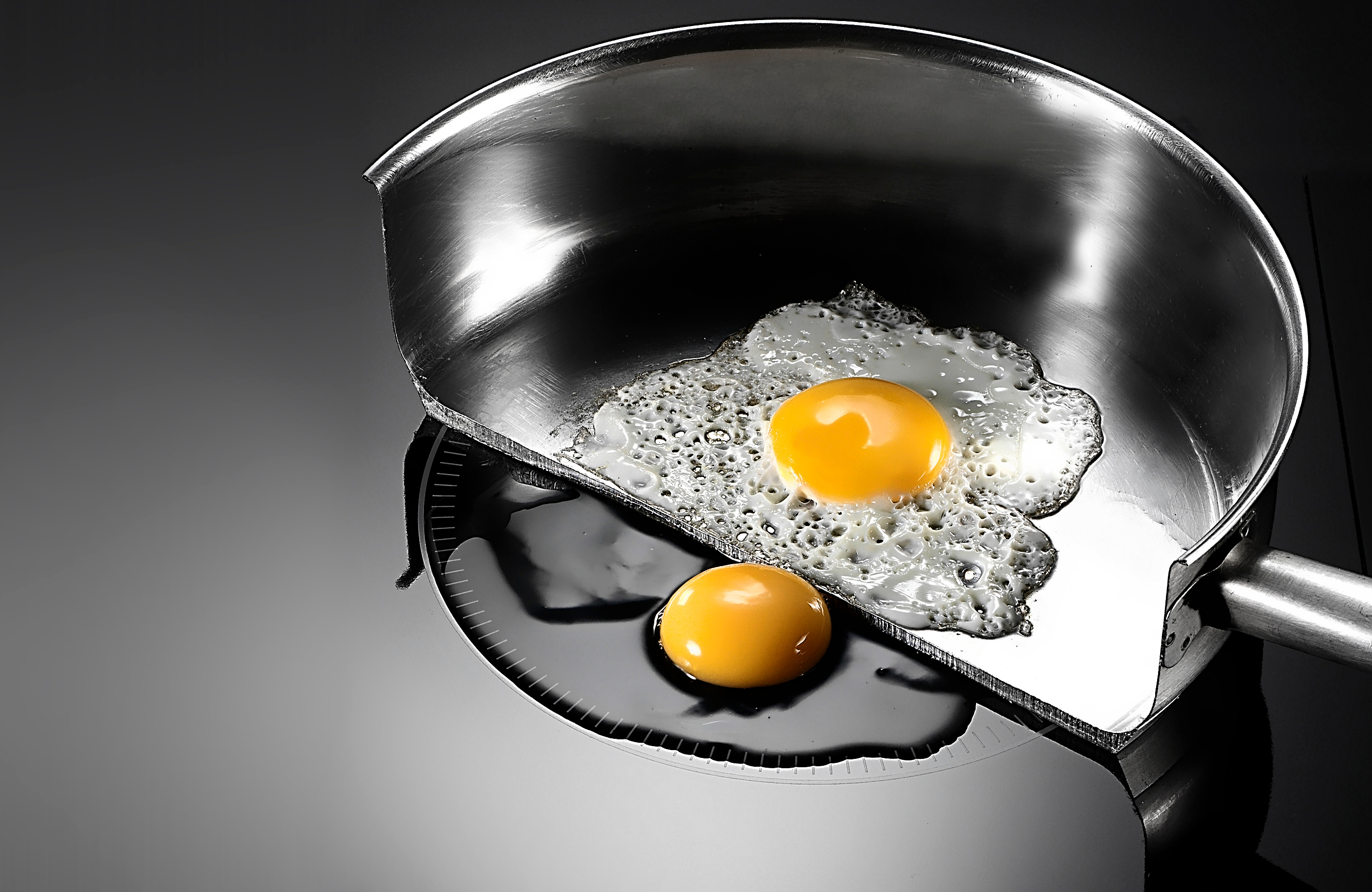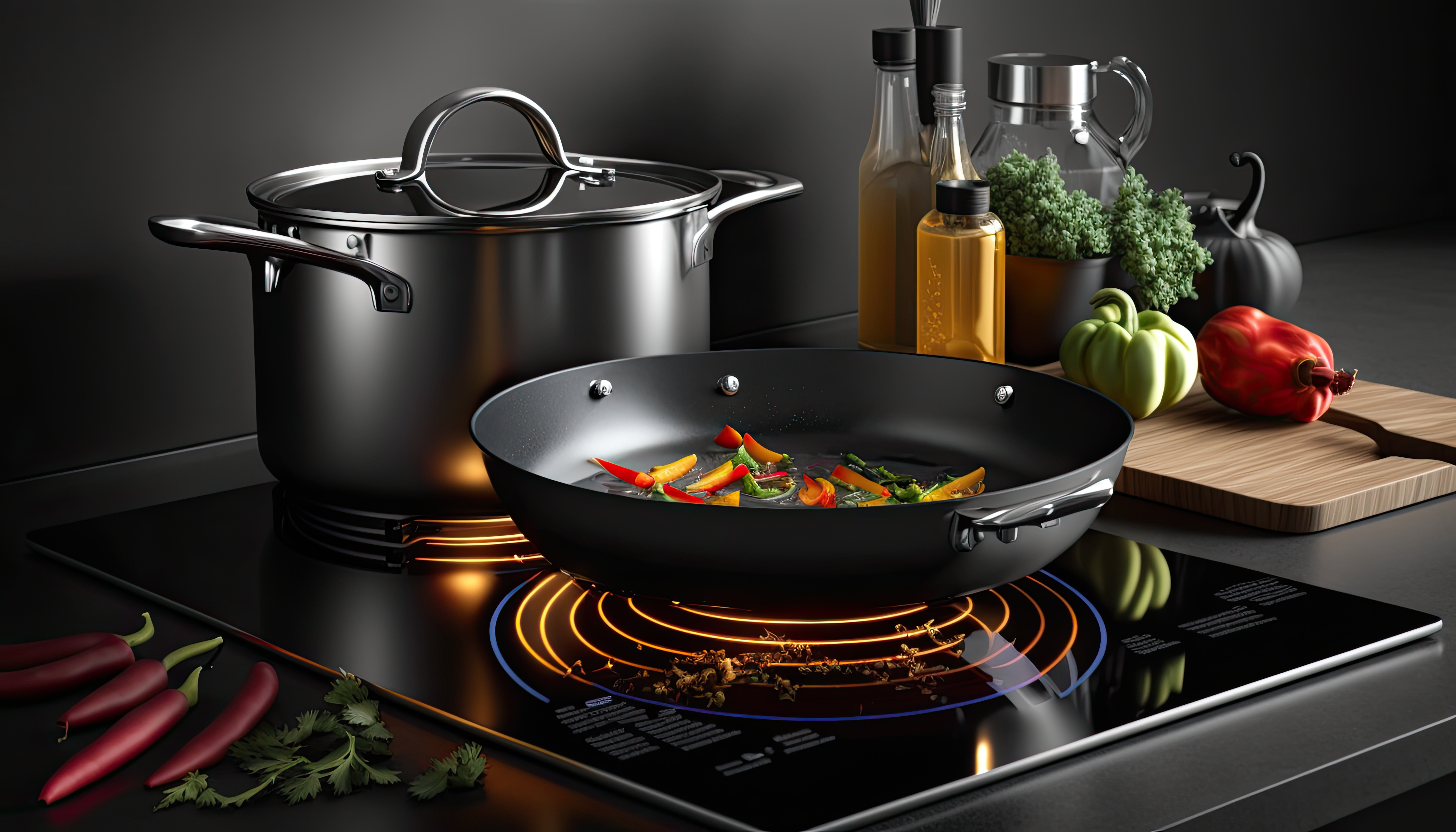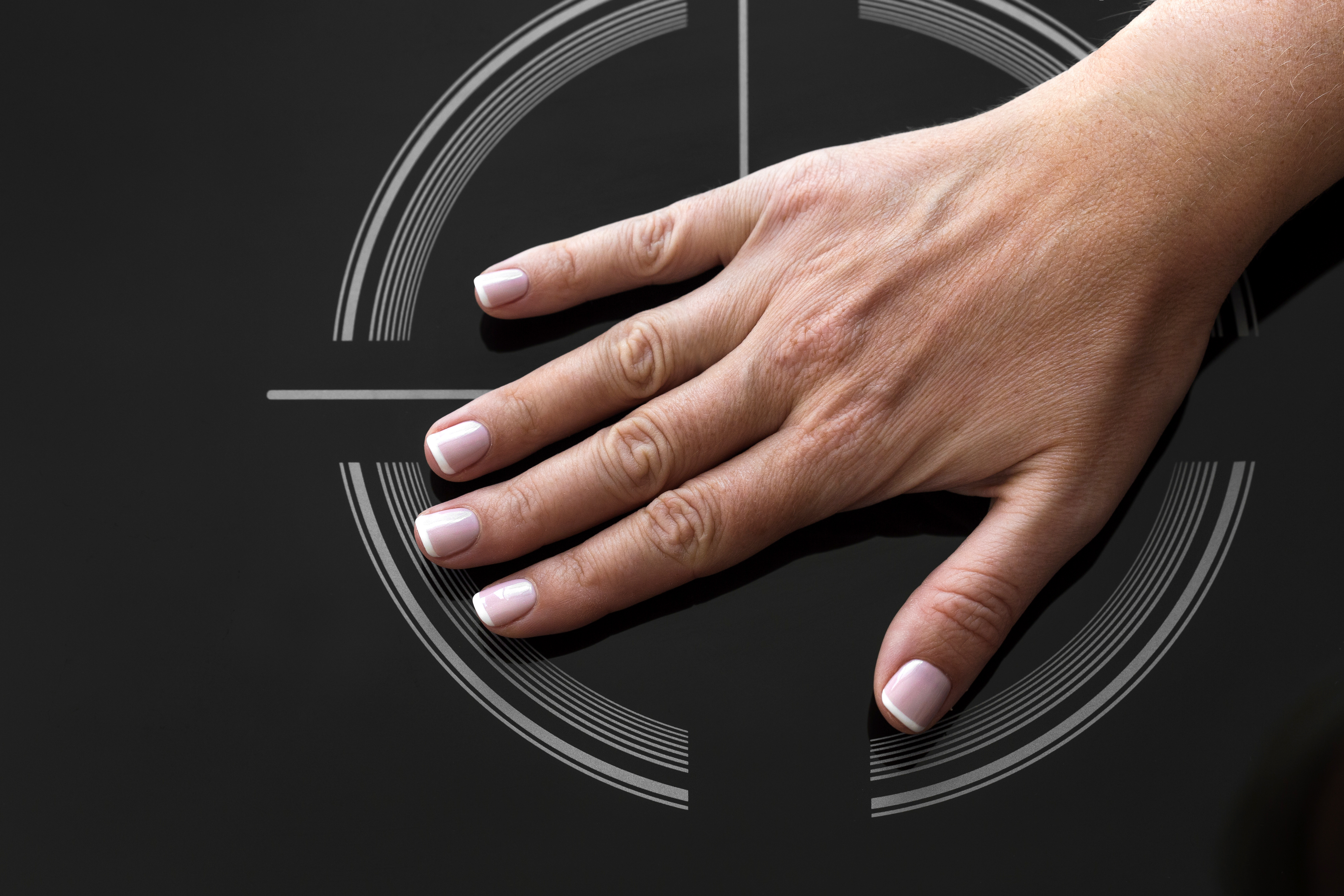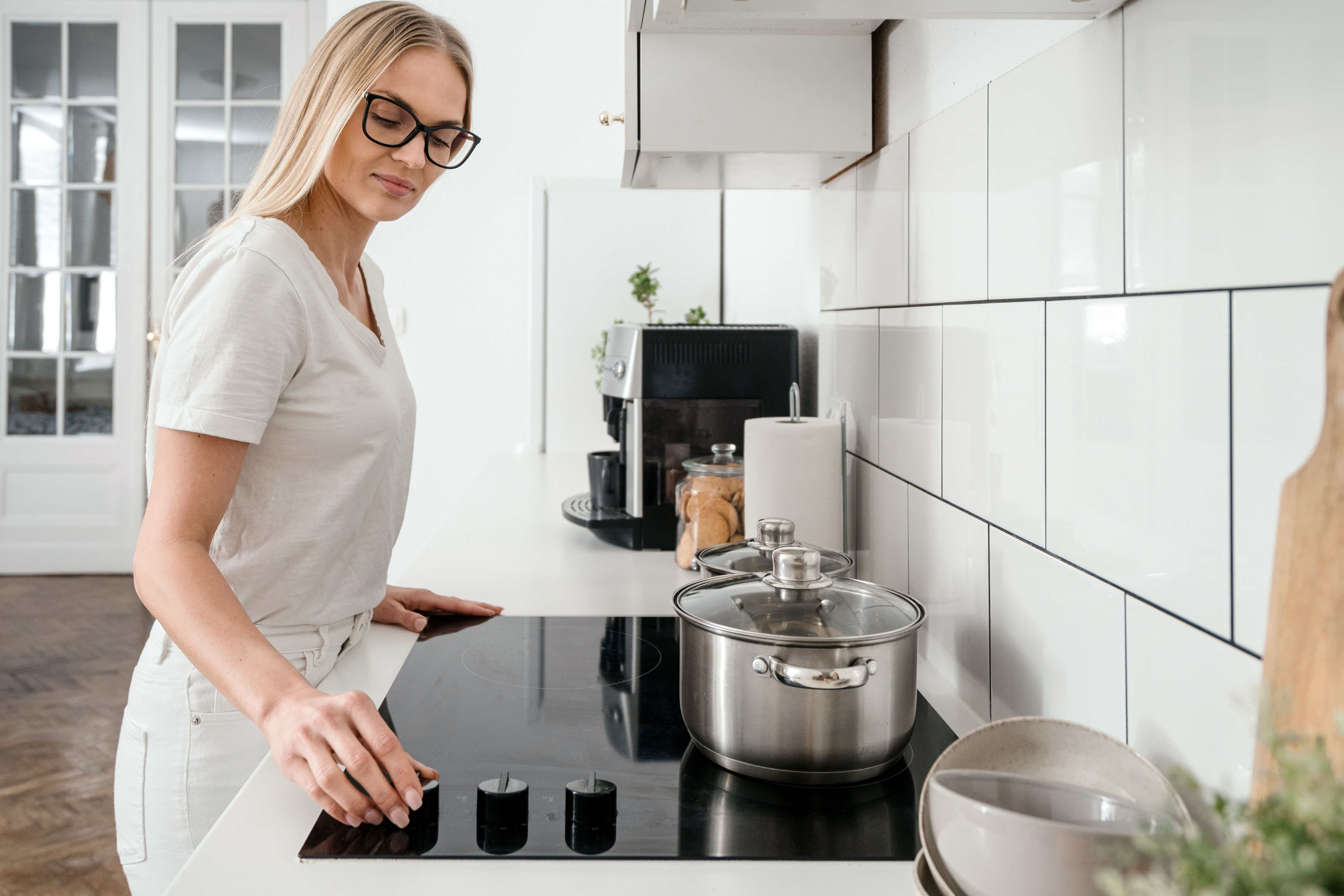What is Induction Cooking and How Does it Work?
Induction cooking may seem like wizardry to those who have heard of it. A pan heating up without a heat source must be magic, right? The truth is, induction cooking is completely scientific and has been gaining in popularity in recent years. Induction stoves have become a favorite among those who own them for their efficiency, responsiveness and safety, and they just may one day be commonplace in U.S. homes.

So, what is induction cooking?
Induction cooking relies on induction to generate heat, as opposed to conduction, which is utilized by gas and electric stoves. This means that rather than heat being generated at a separate source–a gas flame or electric heating element–and transferred into the cookware, heat is generated from within the cookware itself.
How does this work?
Under each “burner” on an induction stove is a copper coil. When electricity is passed through these coils, an electromagnetic field is generated. If there is a piece of magnetic cookware directly above, this field excites the ferrous material within the pan, essentially causing it to vibrate extremely fast. The friction generated from this microscopic vibration is enough to heat up the pan almost instantaneously. This means that–unlike gas or electric stoves–induction stoves have no open heat source heating the cooking equipment.
This property makes induction known for being efficient and fast, as well as extremely safe to use.

How to use an induction stove
Using an induction stove is as straightforward as any other, but there is one extra step to keep in mind: finding compatible cookware. Because this technology relies on electromagnetic fields, any pot or pan you use with induction must also be magnetic. That is, if you would like them to heat up at all. Anything high in iron content should work, such as cast-iron or stainless steel. However, all you need to do to check if a particular piece of equipment will work is place a magnet on it. If it sticks, it is compatible with induction.
However, it is important to keep in mind that not all magnetic pans will work as well as any other. Pans that are poorly constructed or low in iron content will underperform when compared to a sturdy, iron-dense pan such as a cast-iron skillet, for example.
Once you have compatible cookware, using an induction stove is as easy as using the control panel to select the power level you would like on a burner and placing your pan in the designated zone. The power level you choose will affect the strength of the electromagnetic current and how hot your pan will get. Any area of the pan that makes contact with this current will become hot, which also means that you will need to match your cookware to the burner size in order for it to heat up entirely. For example, a nine-inch pan placed on a six-inch burner will only heat up six inches across.
Because induction only works when complete with magnetic cookware, you’ll find that the stovetop will not heat up at all–even on the highest setting–before the pan is placed on it. However, once you begin cooking heat may be transferred from the pan heating itself into the glass, so caution should still be exercised.

Adjusting to induction
Once placed, your pan will heat up much more quickly than you may be used to with an electric or gas stove, and so it might be wise to prepare for a change of pace in your cooking. To avoid an empty hot pan (which can cause warping), consider having all of your ingredients prepared by the time you fire on the stove. It will also likely take some time to become familiar with how hot your cookware will become on each level, as it will differ from what you may be used to with gas or electric stoves.
Something to be aware of when using induction stoves is that they can be fragile with their glass surfaces. You will want to be mindful of how you place down and move your cookware on these, as you don’t want to scratch or break the glass.
A neat trick that is often used to deal with this is placing a towel, paper towel or parchment paper beneath your pan to prevent such damage and to catch any spillovers. Because we’re relying on magnetism here rather than heat transfer, you can still cook just fine! That being said, if you are going to be heating your pan up to extreme temperatures, anything you place beneath them could possibly scorch.
When you have finished cooking, the stovetop will cool off much quicker than those of gas or electric stoves. A quick and easy wipe-down will ensure no food dries onto the surface, and you’re ready to eat!


